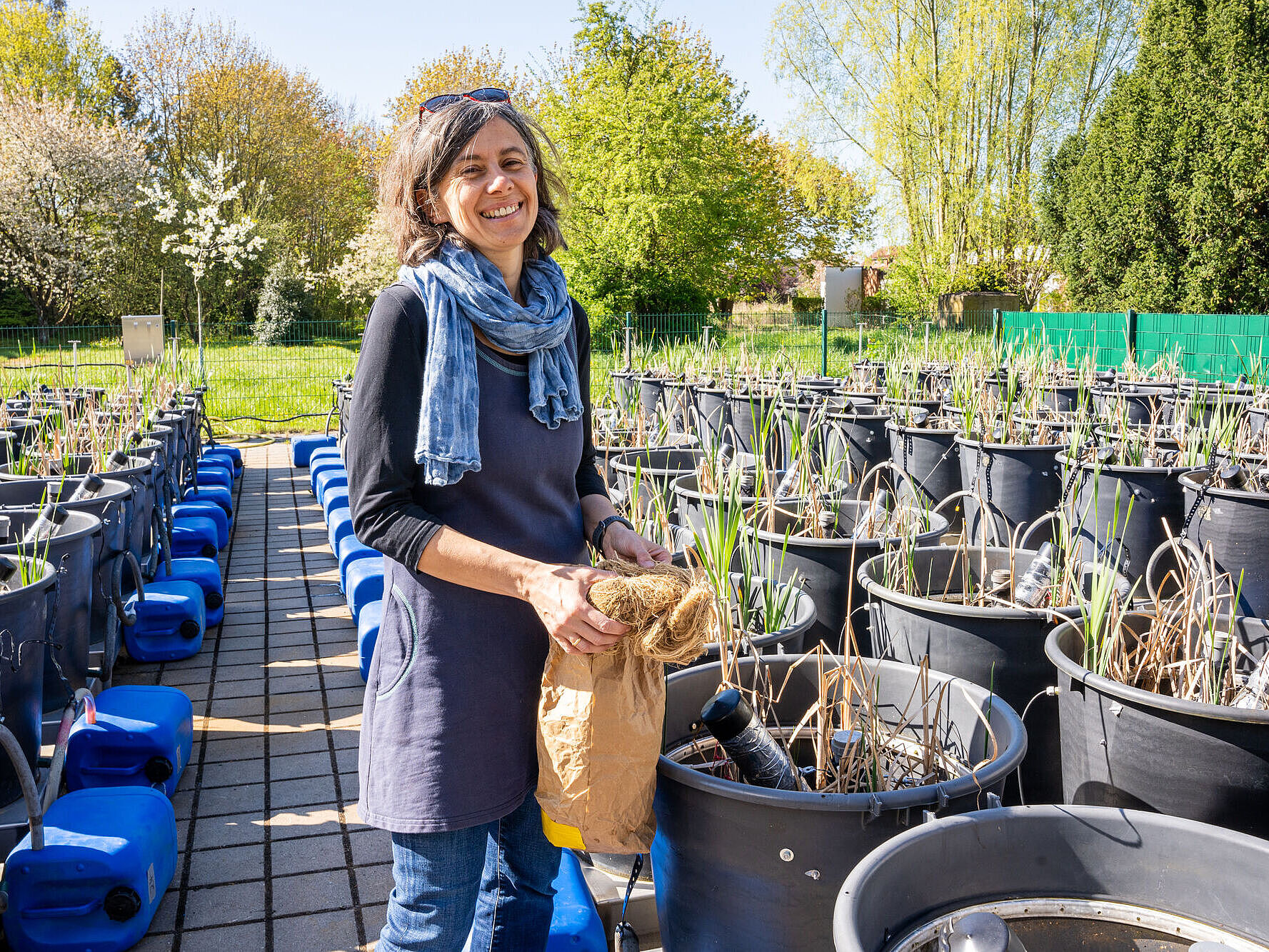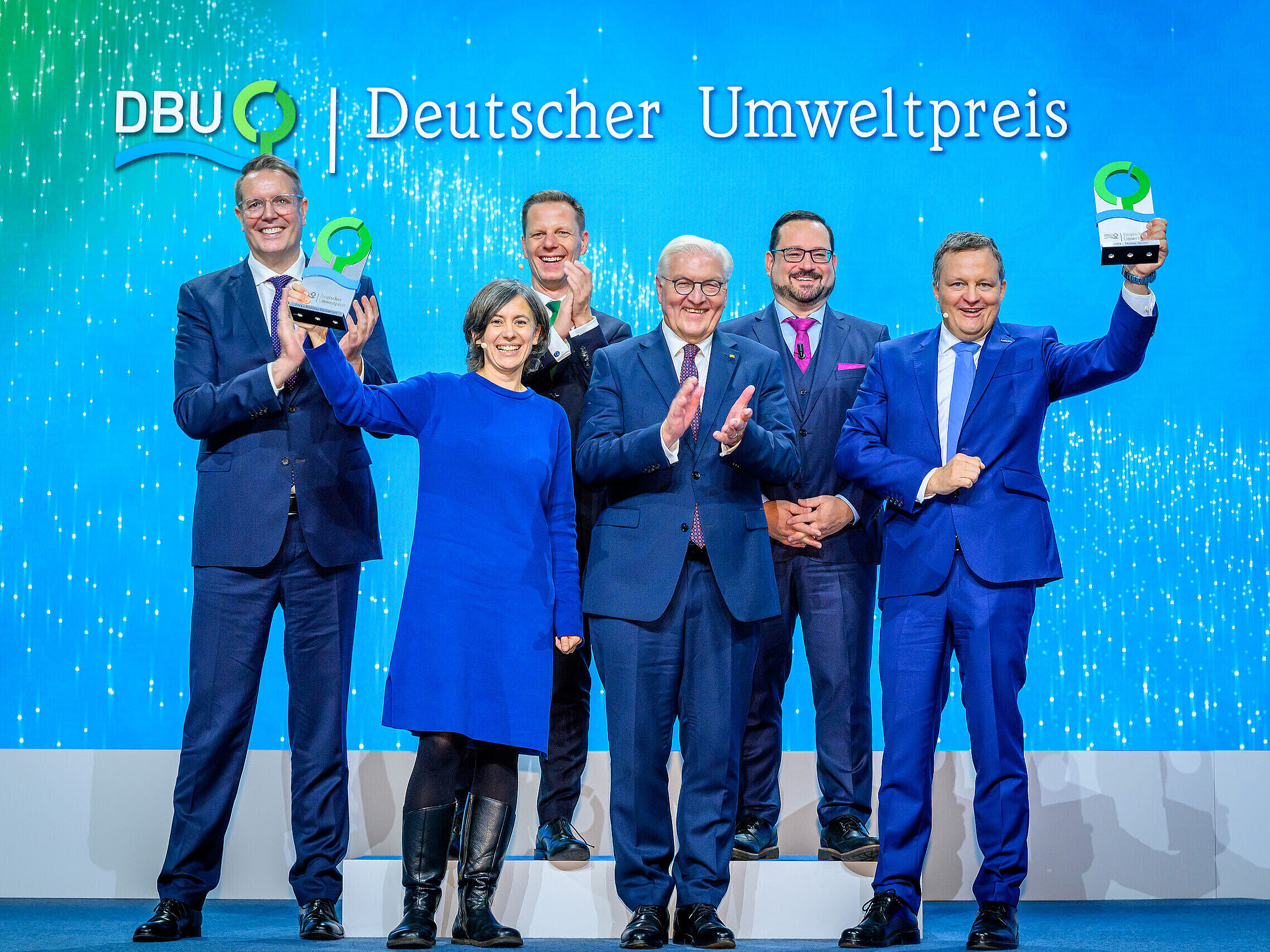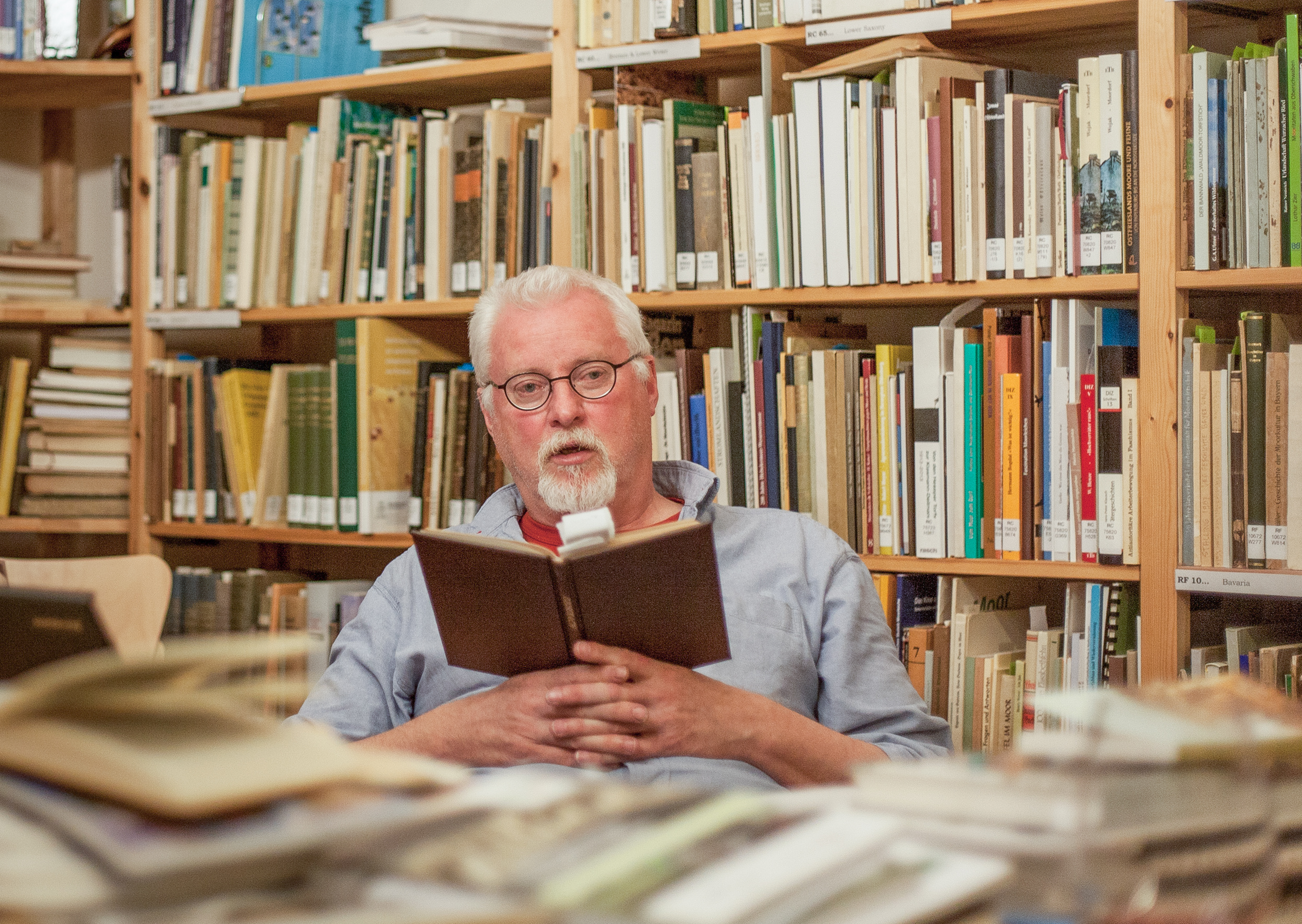Dr. Franziska Tanneberger, landscape ecologist and Head of the Greifswald Mire Centre that was founded in 2015, is now surrounded by more than 100 researchers and other persons dedicated to protecting peatlands all over the world and also in the local region. Their work focuses on the various aspects of peatlands, from paludiculture to peatland fires.
“Thanks to her extraordinary commitment and her scientific excellence, Dr. Franziska Tanneberger has transformed the Greifswald Mire Centre into an internationally recognised institution. Her tireless efforts to protect peatlands and her ability to make complex environmental topics accessible to the broad public have not only sustainably inspired the academic world, but also society,” explains Prof. Dr. Katharina Riedel, Rector of the University of Greifswald.
The DBU awarded this year’s prize to the peatlands expert Dr. Franziska Tanneberger from Greifswald and the electrical engineer Thomas Speidel from Nürtingen, near Stuttgart.
Peatland research since 1824
Peatland research started in Greifswald in 1824, when the French-born natural scientist, Adelbert von Chamisso described peatland near the saltern to the north of Greifswald and close to the Dänische Wiek.
In the 19th and 20th centuries, it was mainly botanists and geologists who investigated the vegetation and landscape history of peatlands. Christian Friedrich Hornschuh, Außerordentlicher Professor (senior lecturer) of Natural History and Botany at the University of Greifswald, described the Große Kieshofer Moor on the outskirts of the Hanseatic town of Greifswald alongside further peatlands in a publication in 1837. He was able to highlight how much pressure the peatlands of Vorpommern’s sparsely wooded landscapes were facing back then due to their use for peat extraction.
In the 1920s, newly developed plant sociology enabled the systematic mapping of peatlands. Thanks to the emerging ability to analyse pollen, it was possible to read peatlands as archives of the earth’s history. Kurd von Bülow was one of the first researchers in Central Europe to use the method for his doctorate. He started to produce a handbook on peatlands that was first published in 1929. However, the envisaged ten volumes of the epochal book project remained unfinished.
The works of botanist Werner Rothmaler, who was Head of the Institute of Agricultural Biology at the University of Greifswald from 1953 to 1962, are considered some of the most significant fundamental resources on peatland research. It was his colleagues and students who performed studies on palaeoecology and vegetation right up until 1992. These also included Prof. Michael Succow, who was appointed professor in 1992, and is also a recipient of the German Environmental Award and the Right Livelihood Award. He expanded traditional botany to include the aspect of landscape ecology, in particular with regard to peatlands. Succow’s characterisation of hydrogenetic types of peatlands was also a major contribution to the field. In 1995, Succow managed to convince the internationally renowned Dutch peatland researcher and conservationist, Hans Joosten, to move to Greifswald. Joosten held the position of senior lecturer for peatland research and palaeoecology at the University of Greifswald from 2008 until his retirement. The media refer to him – also recipient of the Environmental Award – as the “Peatland Pope”. Both peatland researchers shaped Dr. Franziska Tanneberger’s interest in peatlands. The Chair of Peatland Research, held by Prof. Dr. Gerald Jurasinski, was established especially in 2023 to strengthen peatland research in Greifswald.
Peatland research and climate
Since the turn of the millennium, peatland researchers from Greifswald have been investigating and quantifying the emission of greenhouse gases using the Greenhouse Gas Emissions Site Types (GESTs). This makes it possible to estimate the emissions for large areas based on the vegetation found there. Drained peatlands with only 0.3 % of the world’s land surface annually emit two gigatonnes of anthropogenic carbon dioxide emissions, which is 5 % of the world’s overall emissions. That makes peatlands hotspots in the climate crisis. Greifswald’s research on the climatic effects of drained, rewetted and intact peatlands on a regional and worldwide scale were used, e.g. for the United Nations Framework Convention on Climate Change (UNFCCC).
Hans Joosten also coined the term “paludiculture” (Lat. “palus” swamp/marsh and “cultura” agriculture). The idea behind it is a climate-friendly wet agricultural exploitation of rewetted peatlands. A further focus area of peatland research in Greifswald is the biodiversity of peatlands. Drainage and usage have changed the conditions for species typically found in peatlands. Many are now endangered. Research results show that rewetting encourages the variety of species typically found in peatlands, even if it fails to restore the original intact state of a peatland area.
In order to effectively combine research with the implementation of peatland and climate protection, the University of Greifswald, the Michael Succow Foundation and DUENE e.V. decided to join up in the Greifswald Mire Centre (GMC) in 2015. GMC sees itself at the intersection between science, politics and practice, on both a local and global scale.
An important pillar of GMC’s work is the Peatland Library, a special collection on the topics of peatland research and conservation with more than 25,000 publications. GMC also manages two databases: the “Global Peatland Database” (GPD) on the distribution and state of peatlands throughout the world, and the “Database of Potential Paludiculture Plants” (DPPP) on crops that can grow in wet conditions and are thus potentially suitable for paludiculture.
Further information
German Environmental Award 2024
Greifswald Mire Centre
Article "200 years of moor research" [de]
The photos are available on request from pressestelleuni-greifswaldde and can be used for free for editorial purposes in combination with this media release. In the event of publication, the name of the photographer must be mentioned.
Contact at the University of Greifswald
University Communications
Domstraße 11, 17489 Greifswald
Tel.: +49 3834 240 1150
pressestelleuni-greifswaldde



